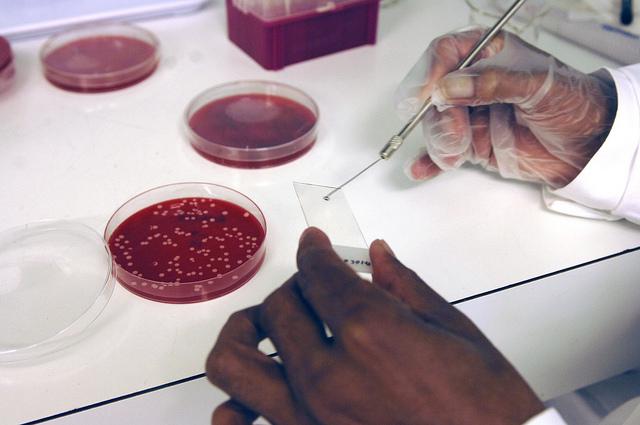
If you study or work in the biosciences, chances are that ‘CRISPR’ has been on your mind for the past five years. That’s Clustered Regularly Interspaced Short Palindromic Repeats. Or, in plain-speak: the easiest, cheapest and most widely effective gene editing technique developed so far.
If you want a pretty video detailing how it works, listen to Feng Zhang, a principal developer of the technique, explain the technique (video). But to cut to the chase—CRISPR gives us the ability to selectively modify (essentially cut-and-paste) genes in vitro and, with some scientific nuance, in vivo too. Although we’ve previously made baby steps toward genetic engineering, this is the first time we’ve had this level of power.
While we need to be mindful of undue hype, it’s hard to overstate the potential this ‘find and replace’ gene editing technology holds. The usually-sober scientific press is breathless enough (see Nature’s CRISPR, the disruptor as an example), while less restrained reporting tends to go the whole hog, sensationalising for example ‘The Genesis Engine.’
Genetic technology has captured public imagination before. And the scientific will’s been around for a while too—the Asilomar Conference on Recombinant DNA was held 42 years ago. What’s different this time around is the technological convergence—of bio- info- and nano-technologies—unfolding in real time that’s creating significant challenges for policy makers and regulators. CRISPR techniques dramatically impact the difficulty, cost, accessibility and practicality of genome editing.
Things are moving fast. In 2015, Bill Gates and others invested $120 million in the CRISPR-based Editas Medicine. In 2017 we’ll see the first wholescale human trials, targeted at certain types of blindness. But focusing on the medical side of things doesn’t tell the full story; CRISPR will change how we think about the environment more broadly, and ecological intervention more specifically. In addition to the chance to develop more robust agriculture, the idea of a gene drive has been getting some recent traction.
By inserting a harmful but ‘selfish’ gene into an organism and watching it spread through the population, a gene drive could potentially and viably eliminate entire species of unwanted animals. It works best with fast-breeding organisms; scientists have demonstrated controlled gene drives with fruit flies, and there’s confidence that the technique could be used to take out malaria-carrying mosquitos.
You won’t find many more explicit public goods than eradicating malaria. It’s up there with world peace. But when we have benefits like that to weigh up, we need to keep cool heads. We’ve thankfully done okay so far, but these are profound issues indeed, and too much of the deliberation has been left to the scientists themselves. Weighing a risky technology against the public benefit is tricky and a moral calculus with imperfect knowledge of potential consequences is fraught. Given how ubiquitous the technology already is, and its potential impacts, we don’t have the luxury of waiting around to see how it pans out before formulating regulatory policies.
CRISPR’s a game-changer. But it doesn’t necessarily compare easily with other revolutionary technologies. Use of the CRISPR technology doesn’t need an advanced quantum-optics lab or a massive cleanroom. It can begin in your garden-variety kitchen. The means to manipulate genes is available on the open internet. Parts of it are practically off-the-shelf, and it’s begging for attention from hostile or unwitting actors.
To make that point: for $150 anyone can order, perfectly legitimately, a DIY kitchen kit which teaches you to engineer E. coli bacteria to survive in an usually hostile medium. Once that might’ve been the end goal of a PhD. Today its ease-of-access makes it available to the ignorant and the merely curious.
Other than intellectual property rights, the techniques are open-source and practically viable. Species and germline-level control isn’t sequestered in a tightly-regimented black box or Manhattan-style project. It’s not funded by an opaque military-industrial complex and held closely by governments.
There’s a real need to ensure that we can regulate the use of the new technology and better understand the way current risk assessment mechanisms can be applied. Used with malevolent intent, CRISPR could have dire consequences. Such potential misuse should provoke hard thought about mitigation options and the implications for national security and resilience structures.
Sometimes convergent technologies are seen to be ‘solutions in search of problems’—but apparently not so in this case. There are concrete problems CRISPR may solve, and there are concrete problems that CRISPR might create. As the technology matures, and as we get a better idea of the full extent of its capabilities, we must think hard about whether we should explore certain applications, rather than just try because we can.
We’ll need to consider the effectiveness of existing regulatory governance structures and decide if they can ensure the safety of such a powerful new technology. The end goal must be prudent and sustained governance of a technology which can do immense good but which could, on a bad day, usher in the potential for real existential threats.